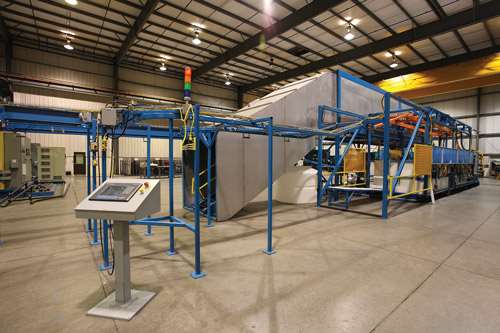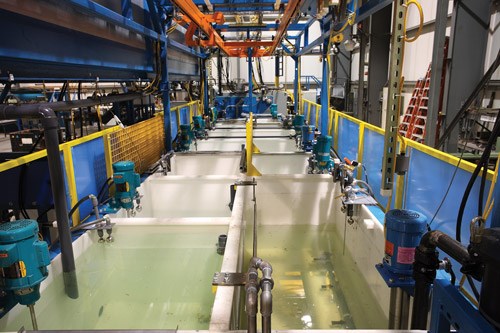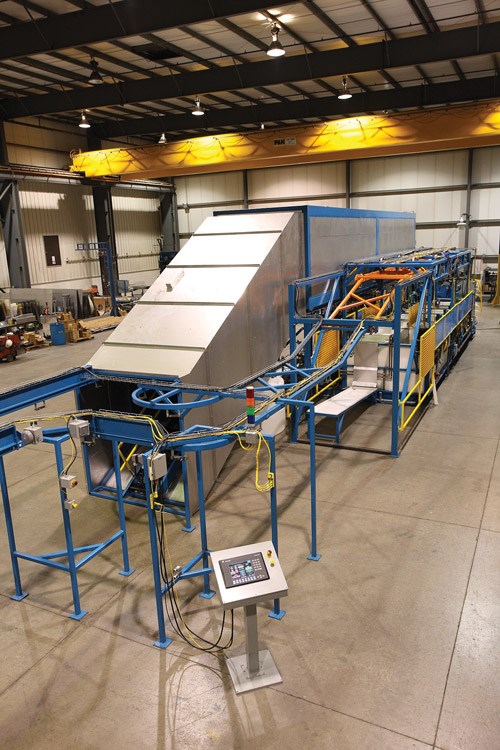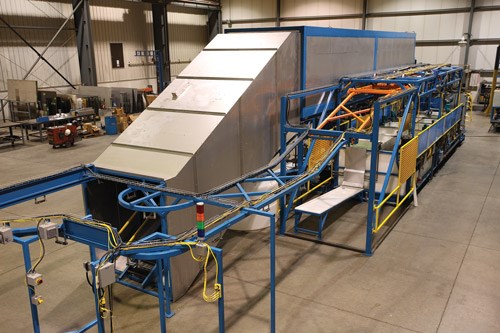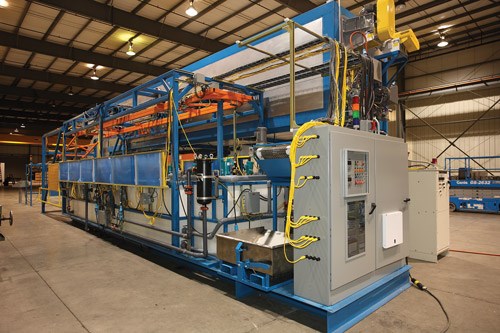Imagine turning space usually set aside for storing parts needing to be shipped out for e-coating into an actual e-coat assembly, one that a plant could lease for a specific job and then turn it back in when the job is finished.
MetoKote Corporation (Lima, OH) says it has come up with a game-changing coating system for component suppliers and metal stampers of small- to medium-size parts by developing the coating industry’s first compact, modular, and flexible e-coating system it calls “mikroKote.”
Company officials say it was designed specifically to meet the needs of component suppliers and metal stamping companies. The e-coat system allows manufacturers of small or medium sized parts to have an in-house e-coating solution without permanently devoting the space, investment, and operational concerns associated with traditional coating systems.
“MikroKote was designed specifically to deliver the latest e-coat capabilities in an economical and compact package,” says Brent Schwartz, MetoKote’s vice president of engineering. “We deliberately set out to create a coating system that is flexible in its configuration and process technologies so manufacturers who have always wanted to consider an in-house e-coat system, but thought they couldn’t afford it, didn’t have room for it, or lacked the in-house expertise to run it, now have a practical solution for consideration.”
The idea seems to be taking off. Toyota Motor Manufacturing is running a mikroKote in their Tacoma assembly facility in Baja, Mexico to coat upper and lower control arms.
“MetoKote did a good job managing the project, and the system is working well,” says Toyota’s Doug Bush, the plant’s paint general manager. “It was the perfectly-sized system for the application we are using it for, which is coating small suspension parts.”
MetoKote says the benefit of the mini e-coat system includes:
Its optional wastewater treatment system, which has a minimal footprint of only 2,000 ft2, about one- tenth of the size of most standard e-coat systems
The ability to shave as much as five working days off the coating process
Low to no upfront equipment investment, and minimal to no plant expansion or revision expenses.
Reducing inventory carrying and overall supply chain costs “MikroKote is a direct result of our focus on providing value-added contributions to our customers in order to help them reduce supply chain costs,” says DeWayne Pinkstaff, MetoKote’s president and CEO. “This system is completely capable of delivering the quality level of coating people have come to expect; but, in a more compact and efficient manner. It’s a perfect solution for those companies who understand the value and benefits that can be achieved through leaning out their value stream.”
The 2,000 ft2, 13-stage, 350-gallon tank system includes wastewater treatment and is customizable to run specific pre-treatments, a broad range of e-coat or autophoretic paint, low-cure coatings, and multiple colors. Pinkstaff says a poly vinyl chloride pump, a 100-amp rectifier, and a fully-adjustable oven which can run off of natural gas or liquid propane—a critical need when facing challenging overseas utility constraints—can be configured with over 40 standard options.
Schwartz says a multi filtration, manual or automated indexing, chemistry and process sequence order, such as iron or zinc phosphate, and other pre or post treatments can be adjusted to meet individual needs.
“The lead-time and cost of the project were much better than any other option,” says Toyota’s Bush. “The system requires minimal manpower to operate.”
Schwartz says the system can accommodate parts within a window of 18 inches by 36 inches by 36 inches and a load bar capacity of 150 pounds.
He says that it takes just over three months to get a system built and installed in a facility.
“From start to finish the equipment takes less than 12 weeks time to build, and a maximum two weeks time to install, debug, and have parts running,” added Schwartz.
The mikroKote system and part conveyor can be custom designed to accommodate a facility’s existing layout and available floor space. It can fit against a wall, around a corner, or on a mezzanine level, Schwartz says.
He adds that typically the shipping space used for parts ready to go out for coating is enough to house the mikroKote. With a standard capacity of 2 million ft2 of coating per eight-hour shift per year, and a two-minute cycle time in a 13-stage process, a component supplier can have e-coated parts in two hours rather than five days, Schwartz says.
Additionally, locating the e-coat system in the production facility eliminates freight costs and puts the manufacturer in charge of critical scheduling, which allows a company to be more responsive to customer needs.
Pinkstaff says another benefit to customers is that MetoKote already has expertise in operational efficiency, environmental compliance, and quantitative chemical analysis, so mikroKote takes the worry out of the coating process.
MetoKote, which will sell or lease the system, has more than 1,500 employees and $150 million in global sales. They serve over 900 customers in more than 30 facilities throughout the U.S. and the world. n
For more information on MetoKote, visit metokote.com, or call 419-996-7800.
RELATED CONTENT
-
The main task of this work was to study the influence of the different parameters on the electrolytic coloring process for aluminum.
-
Fostering Sustainable business and People success through new ways of thinking
-
How do you measure the surface area of a threaded fastener? How much coating would you put on it? How thick of a coating? What about non-threaded fasteners? The U.S. Department of Agriculture’s Forest Service, of all people, may have come up with the solution for those pondering how to coat sometimes-difficult small pieces using computer imaging and software to compute the area.


